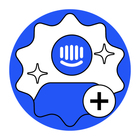We are currently re-structuring our Support workflows for our app with focus on AR, DE, EN, FI and NO language. As our support is only available via Mobile SDK, we’re struggling to forward customers to the correct language.
The issue with this is that our app is a local social media platform and our users are as well using it abroad, language routing happens on “language override”. Unfortunately, this leads to misrouting if users are having their device set on e.g. English but are writing content in FI, where then our EN Support team has to move it to the correct team again, taking too long for a satisfying support experience.
Is there a better and more reliable way to route customers to the correct Support team and assign the correct triaging workflow in their language?












